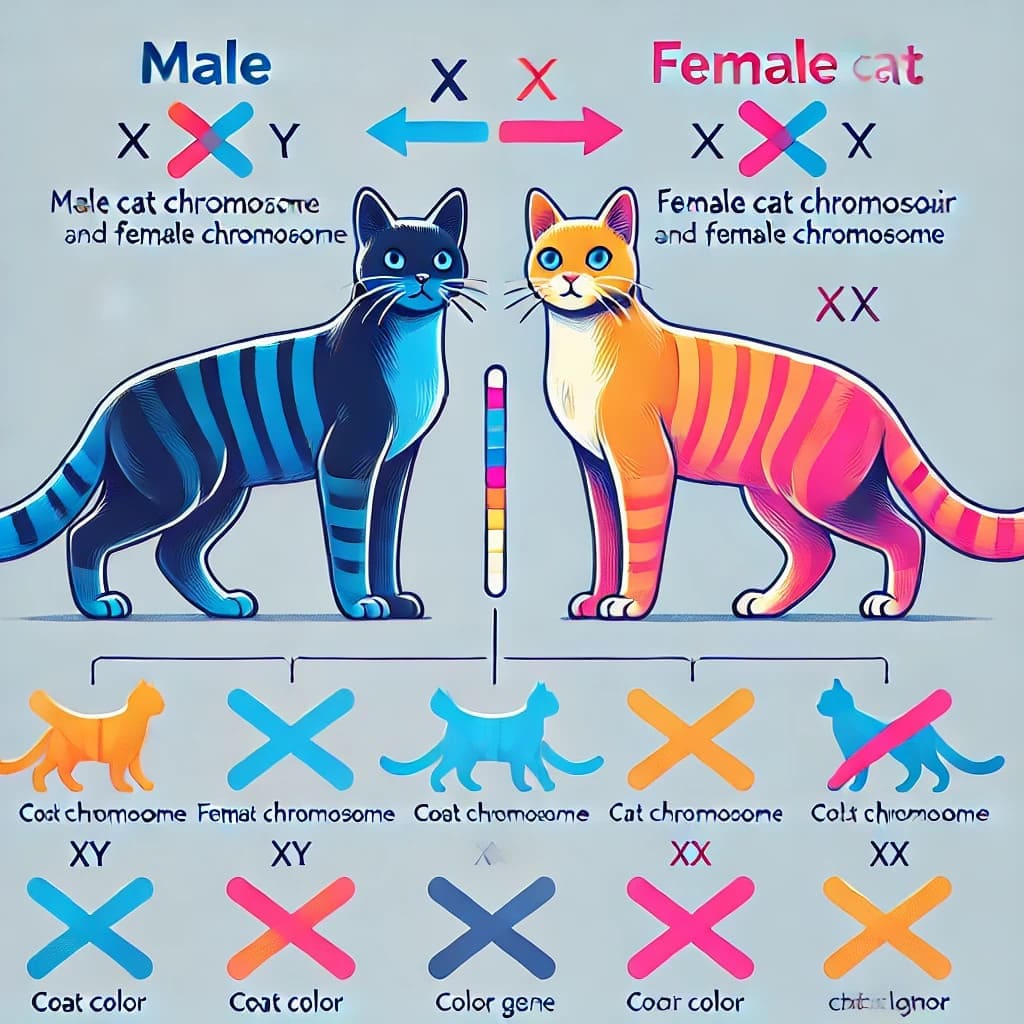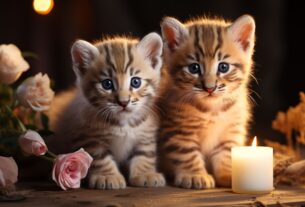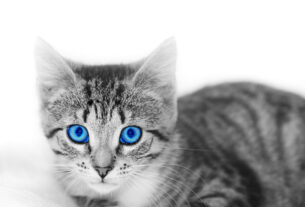An orange tabby cats (also called a ginger or red tabby) are not a separate breed but a coat color pattern. These cats have fur that ranges from pale yellow-orange to deep reddish-orange, often with stripes, swirls, or spots—just like other tabby cats.
Their color comes from a special pigment called pheomelanin, controlled by a gene on the X chromosome.
Ever met a cat that looked like it belonged on a cereal box or in a cartoon? Chances are, it was an orange tabby. They’ve got bold stripes, a fiery coat, and a personality that’s hard to ignore. Whether you’ve just adopted one or you’re wondering why Garfield always looks like your own cat—this guide has you covered.
We’re breaking down the real facts about orange tabby cats. No fluff. Just straight answers, fun truths, and what to expect if one of these fiery felines enters your life.
What Breed Is an Orange Tabby Cat?
An orange tabby cat isn’t a breed—it’s a coat pattern and color that can appear in many cat breeds. Most orange tabbies are domestic shorthairs, but you can also find them in breeds like the Maine Coon, American Bobtail, Persian, and British Shorthair.
The word “tabby” refers to the stripes, swirls, or spots on a cat’s coat. Orange is just the color. So while the pattern and color are iconic, it doesn’t point to one specific breed.

Orange Tabby Cat Facts You’ll Actually Want to Know
Forget the usual stuff. Here are some real, need-to-know orange tabby cat facts:
- 80% of orange tabby cats are male. This isn’t a myth—it’s genetics (more on that in a bit).
- All orange tabbies are born with some kind of pattern—classic, mackerel, spotted, or ticked.
- They aren’t a breed, but a color pattern found across many breeds.
- Every orange tabby cat has a little “M” mark on their forehead.
- The gene that makes them orange is sex-linked, which is why so many of them are male.
Are All Orange Tabby Cats Male?
No, but about 4 out of 5 are. That’s because the gene that causes orange coloring is carried on the X chromosome. Male cats have only one X (and one Y), so if that X carries the orange gene—they’re orange. Females have two Xs, and both need to carry the gene to be orange.
So yes, it’s rarer to see a female orange tabby. But they definitely exist.

Orange Tabby Cat Personality: What’s It Like?
Orange tabby cats are known for being friendly, laid-back, and attention-loving. They’re often called “dog-like” because many of them follow their humans around and love social time.
Of course, every cat has its own vibe. But many orange tabby owners swear these cats are more affectionate and playful than average.
That said, they can also be vocal and a little pushy when they want something. If you’ve ever had an orange tabby yell at you because the food bowl is half-empty, you’re not alone.
🧠 Tip: Use this section to compare with other coat colors—some people believe tortoiseshells are spicier, while black cats are chill.
Orange Tabby Cat Behavior: What to Expect
Expect a mix of bold and cuddly. Orange tabbies are usually active, curious, and not shy. They often enjoy playtime, and many love being around people more than other cats.
Some behaviors you might see:
- Headbutting your leg for pets
- Meowing (a lot)
- Taking over your chair
- Snoozing in sunbeams like royalty
But they’re not wild. Most orange tabbies adapt well to homes with kids, dogs, or other cats—as long as they feel like they’re still in charge.
How Long Do Orange Tabby Cats Live?
The average orange tabby cat lifespan is 12–15 years. That’s typical for most domestic cats. With proper care, some live past 18.
Lifespan depends on more than coat color—it comes down to genetics, diet, exercise, and whether they’re indoor or outdoor cats.
Here’s a chart comparing lifespan ranges across common cat breeds in which orange tabbies often appear. Orange tabby refers to a coat color and pattern, not a breed—so this chart focuses on breeds where orange tabby coloring is frequently found.
| Cat Breed | Lifespan Range (Years) | Orange Tabby Appearance |
| Domestic Shorthair | 12–17 | Very Common |
| Domestic Longhair | 12–17 | Common |
| Maine Coon | 12–15 | Common |
| American Shorthair | 15–20 | Common |
| Persian | 12–17 | Occasional |
| British Shorthair | 12–20 | Less Common |
| Abyssinian | 9–15 | Rare |
| Oriental Shorthair | 12–15 | Occasionally Seen |
| Scottish Fold | 11–15 | Occasional |
| Exotic Shorthair | 12–15 | Occasionally Seen |
Notes:
- Domestic Shorthair and Domestic Longhair cats are mixed-breed and account for the majority of orange tabbies.
- Lifespan can vary with genetics, lifestyle, and healthcare.
- Neutered/spayed indoor cats typically live longer.
Let me know if you’d like this in a downloadable format or visual graph.
How Rare Are Orange Tabby Cats?
They’re not rare—but female orange tabbies are. You’ll see orange tabbies in shelters, homes, and social media feeds everywhere. But female orange tabbies are much less common, which is why some people think orange cats are all boys.
You’ll also find them more often in domestic shorthairs than in fancy purebred cats.
Types of Tabby Cats (And Which Ones Come in Orange)
There are four main tabby patterns. Orange cats can show up in any of these:
- Classic tabby – Big swirls like a marble cake.
- Mackerel tabby – Thin, tiger-like stripes down the sides.
- Spotted tabby – Dots or oval-shaped spots.
- Ticked tabby – No stripes on the body, just faint markings on the face and legs.
Tabby Cat Genetics: The Science Behind the Stripes
The tabby pattern comes from a dominant gene—if a cat has it, the pattern shows. The orange color, though, is controlled by the O gene on the X chromosome.
So a male (XY) with the O gene on his X will be orange. A female (XX) needs two O genes to show orange. That’s why female orange tabbies are less common.
🧬 Tip: Skip the technical jargon—just show how “O gene + tabby gene = orange striped cat.”
Orange Tabby Coat Pattern: What Makes It Stand Out?
It’s all about contrast. The orange coat usually features deeper red stripes or swirls. You’ll see a creamy belly and sometimes white feet, but every cat is a little different.
Some look bold and bright. Others have a softer, peachy glow. The pattern always includes the “M” shape on the forehead—that’s a tabby trademark.
Do Orange Tabby Cats Shed?
Yes, orange tabby cats shed just like any other cat. Shedding depends on the breed, not the color.
A domestic shorthair orange tabby might shed less than a long-haired Maine Coon tabby, but both will leave hair on your black clothes.
Regular brushing helps. So does a good diet. But if you’ve got an orange tabby, get used to a bit of fur tumbleweed.
Orange Tabby Cat Names: Fun Ideas Based on Color and Personality
Need a name for your ginger pal? Try these:
- Food-themed: Cheeto, Marmalade, Pumpkin, Nacho
- Pop culture: Garfield, Simba, Crookshanks, Ron (Weasley)
- Classic: Rusty, Blaze, Sunny, Ginger
Choose something that fits your cat’s look—or attitude.
Orange Tabby Cat Price: What Should You Expect to Pay?
Orange tabby cats usually cost $0 to $300 depending on where you get them. If you’re adopting from a shelter, adoption fees range from $50–$150. Buying from a breeder—especially for a purebred tabby like a Persian or Maine Coon—can cost $200–$2,000.
But color doesn’t usually change the price. Breed, pedigree, and location matter more.
Orange Tabby Cat Breeds List
You’ll find orange tabbies in many breeds:
- Domestic Shorthair
- Domestic Longhair
- Maine Coon
- Persian
- British Shorthair
- American Shorthair
- Abyssinian
If a breed allows tabby coloring, there’s probably an orange one out there.
Orange Tabby Kitten: What to Know Before Bringing One Home
Orange tabby kittens are playful, bold, and curious. From the start, they usually want attention and action.
They may be a bit mouthy or clingy at first, especially if separated from mom early. But they usually settle into loyal lap cats.
Expect mischief. Expect affection. And expect some yelling around dinner time.
Famous Orange Tabby Cats You’ve Definitely Seen
You’ve met some of them before:
- Garfield – The king of lasagna and naps
- Morris the Cat – 9Lives brand mascot
- Orangey – Star of Breakfast at Tiffany’s
- Crookshanks – Hermione’s cat in Harry Potter
Their orange fur and confident attitude just work on screen.
Orange Tabby Cat Traits That Stand Out
They’re bold, chatty, and full of charm. Key orange tabby traits:
- Social
- Food-driven
- Loyal
- Often vocal
- Playful into adulthood
They may not be rare, but their personalities sure are loud (in the best way).
Orange Tabby Cat Myths (And What’s Actually True)
Myth: All orange tabbies are male.
Truth: Most are—but not all.
Myth: They’re always friendly.
Truth: Many are, but personality is individual.
Myth: They’re their own breed.
Truth: Nope. Just a coat color and pattern.
Do Orange Tabby Cats Have Health Issues?
No specific health issues are tied to the orange color or tabby pattern. But like all cats, orange tabbies can be prone to:
- Obesity (especially if they’re food-obsessed)
- Dental disease
- Kidney issues (in old age)
Vet care, exercise, and a balanced diet go a long way.
Orange Tabby Cat Intelligence: Are They Smart?
Yes, many orange tabbies are clever—especially when it comes to getting what they want. They’re known for problem-solving, opening cabinets, or begging like pros.
They often learn routines quickly. And if you’re late for dinner time? Oh, they’ll remind you.
Final Thoughts
Orange tabby cats aren’t just pretty—they’re packed with personality, history, and charm. Whether you’ve got one curled up next to you or you’re thinking of adopting, now you know the truth behind the stripes.
They’re not rare. They’re not a breed. But they are unforgettable.




1 thought on “Orange Tabby Cats Explained: Color, Genetics & Fun Facts”